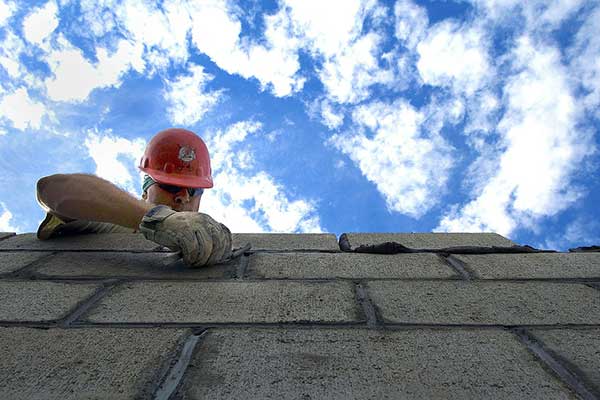Disclaimer: The information on our website is provided for general information purposes only. We make no representations or warranties of any kind, express or implied, about the completeness, accuracy, reliability, suitability or availability with respect to the website or the information contained on our website for any purpose. Any reliance on such information is therefore strictly at your own risk and we are not liable for any damages or losses arising out of or resulting from your reliance on any information contained on our website.
A masonry worker uses concrete, bricks and blocks, and stone. In fact, their projects also vary from building fences, walls, walkways, and other masonry structures. Though many work full-time, masons that work outdoors may have reduced hours when there is inclement weather. Next, watch a video to learn what a masonry worker does.
How to Become a Masonry Worker

Masonry workers typically have a high school diploma or equivalent and learn their skills under experienced workers on-the-job. However, there are also technical schools that offer programs in basic masonry. These programs may operate independently or in conjunction with apprenticeship training. To qualify, you must be 18 years or older and also be physically able to do strenuous work.
An apprenticeship program can last up to four years and students must complete technical instruction along with on-the-job training. Additionally, contractor associations and unions may also sponsor apprenticeship program. However, the hard work and effort can be worth it. If working every day in an office or on a computer does not interest you, this career field may be right up your alley.
Job Description of a Masonry Worker
The duties of a masonry worker varies depending on the type of job they are working. However, all masons must typically calculate the materials needed for their work by reading drawings or blueprints. Additionally, they use any drawings or blueprints from clients to plan to lay out patterns, foundations, or forms. Along with laying material, they must also cut or break materials to the proper size and mix grout or mortar.
A masonry worker needs to construct corners and align structures horizontally and vertically. Furthermore, they must fill expansion joints with the correct caulking materials and keep trowels, hand tools, and power tools clean. When considering this career field, it’s important to understand it is a physically demanding job. These workers often lift heavy materials and must bend, stand, and kneel for long periods of time.
Masonry Worker Career Video Transcript
Building with materials that are both beautiful and sturdy, masonry workers create structures that last. Masonry workers, also known as masons, use weatherproof bricks, stones, and concrete to build new homes and buildings, and to maintain the historic structures we want to preserve. Masons specialize in different materials and structures: Brickmasons and blockmasons build and repair walls, chimneys, and other structures. Some specialize in brickwork for industrial facilities that can tolerate intensely high temperatures.
Cement masons and concrete finishers lay walls and sidewalks, and form the pieces that make up heavily-used roads and buildings. Segmental pavers install interlocking brick walkways, patios, and walls. Stonemasons carefully cut and select stone to create patterns as they build walls, unique fireplaces, and building exteriors. Terrazzo workers add fine marble chips into the finish of cement or resin to create decorative walkways and floors. Masonry work is fast-paced and strenuous. It includes heavy lifting, using sharp tools, and working from scaffolds.
In addition to strength and stamina, masons need the ability to see subtle color variations and envision how stones will fit together to build attractive and stable structures. Work hours are generally full time, with some overtime to meet deadlines. Cold or rainy weather can stop work. After completing a high school education, most masons learn on the job or through a 3- to 4-year apprenticeship.
Article Citations
Bureau of Labor Statistics, U.S. Department of Labor, Occupational Outlook Handbook, Masonry Workers.
National Center for O*NET Development. 47-2021.00. O*NET OnLine.
The career video is in the public domain from the U. S. Department of Labor, Employment and Training Administration.

